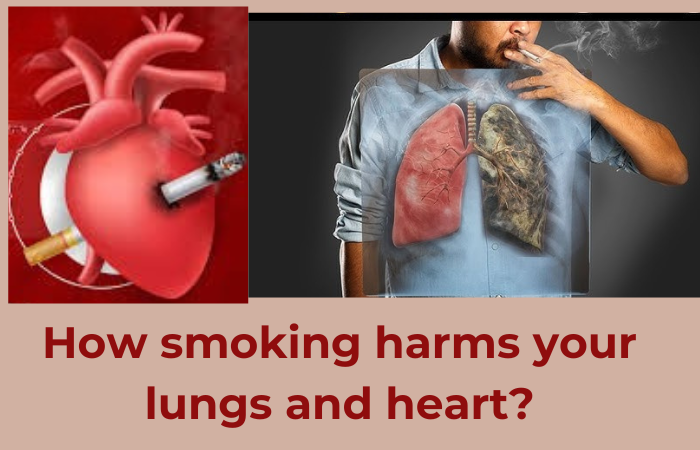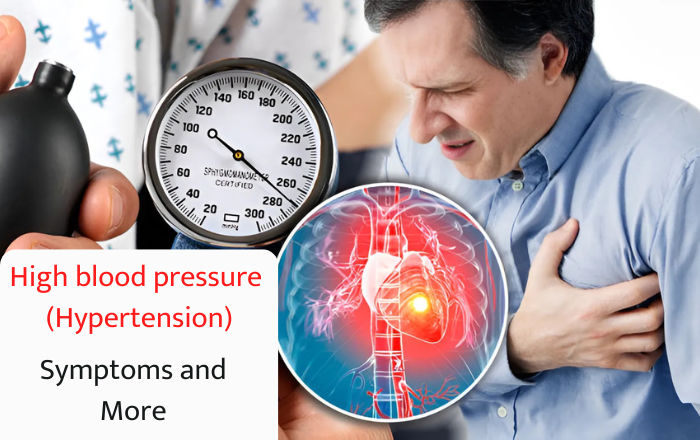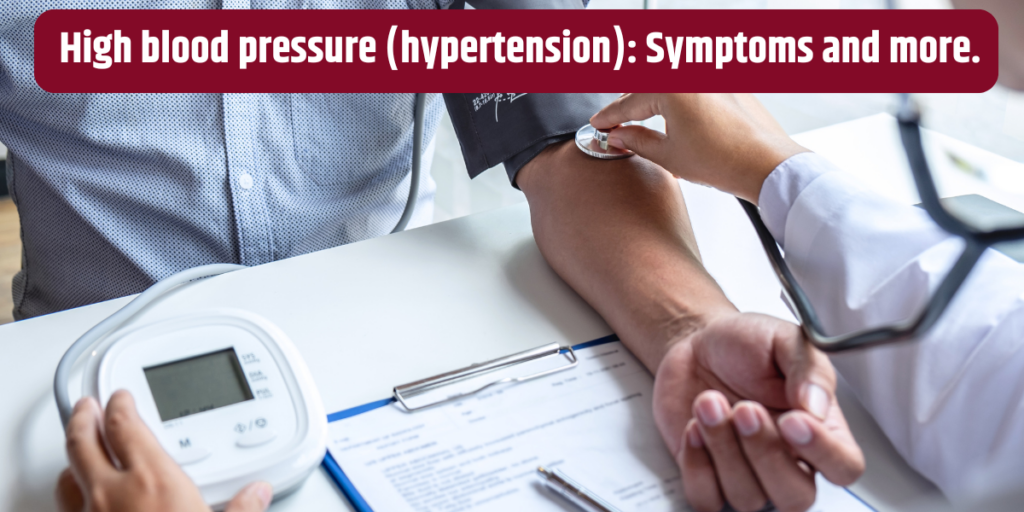Prediabetes: What It Means and How to Reverse It

Prediabetes is a silent warning sign that your blood sugar levels are higher than normal but not high enough to be classified as type 2 diabetes. If left unchecked, prediabetes can progress into full-blown diabetes, increasing the risk of serious health complications like heart disease, kidney problems, and nerve damage. However, the good news is that prediabetes is reversible with timely intervention and lifestyle changes. What is Prediabetes? Prediabetes occurs when the body becomes resistant to insulin or when the pancreas does not produce enough insulin to maintain normal blood sugar levels. It is often diagnosed when fasting blood sugar levels range between 100–125 mg/dL, or an HbA1c test shows levels between 5.7% and 6.4%. Common Risk Factors for Prediabetes Several factors can increase the risk of developing prediabetes, including: Being overweight or obese Lack of physical activity Poor dietary habits (high sugar and processed food intake) Family history of diabetes High blood pressure or cholesterol levels Polycystic ovary syndrome (PCOS) Age (risk increases after 45 years) Signs and Symptoms of Prediabetes Unlike diabetes, prediabetes often has no noticeable symptoms. However, some people may experience: Increased thirst and frequent urination Fatigue and sluggishness Unexplained weight gain Darkened skin patches (acanthosis nigricans) on the neck, armpits, or groin Sugar cravings and hunger spikes How to Reverse Prediabetes Reversing prediabetes requires commitment to healthy lifestyle changes. Below are proven strategies to lower blood sugar levels and prevent diabetes. 1. Improve Your Diet Eating a balanced diet is crucial in managing blood sugar levels. Some dietary tips include: Increase Fiber Intake: Whole grains, legumes, and vegetables help slow sugar absorption. Opt for Lean Proteins: Chicken, fish, tofu, and beans support muscle health and satiety. Cut Refined Carbs and Sugars: Minimize white bread, sugary drinks, and processed foods. Choose Healthy Fats: Avocados, nuts, and olive oil support insulin sensitivity. 2. Stay Physically Active Exercise helps the body use insulin more efficiently and lowers blood sugar levels. Aim for: At least 150 minutes of moderate exercise per week (walking, swimming, cycling) Strength training twice a week to improve metabolism Daily movement to reduce sedentary behavior 3. Maintain a Healthy Weight Even losing 5-10% of body weight can significantly reduce the risk of developing diabetes. A combination of a healthy diet and regular exercise can aid in weight management. 4. Manage Stress Levels Chronic stress can lead to insulin resistance. Practices such as meditation, deep breathing, and yoga can help lower stress hormones and improve overall well-being. 5. Get Quality Sleep Poor sleep patterns can affect blood sugar control. Aim for 7-9 hours of quality sleep each night to maintain a healthy metabolism and insulin function. 6. Monitor Blood Sugar Levels Regularly checking blood sugar levels can help track progress and make necessary adjustments to lifestyle habits. When to Seek Medical Help? If you have risk factors for prediabetes or experience symptoms, consult a healthcare provider for proper screening and guidance. Early detection can make a huge difference in preventing diabetes. For those looking for professional medical support, Aadhar Hospital, a trusted hospital in Dehu, provides expert consultation and advanced diabetes management services. Their team of specialists offers personalized treatment plans to help you reverse prediabetes effectively. Prediabetes is a warning sign, but it is not a permanent condition. By making simple yet effective lifestyle changes, you can reverse prediabetes and take control of your health. Don’t wait until it’s too late—start making healthier choices today! If you’re looking for expert guidance, visit Aadhar Hospital, a leading hospital in Dehu, for comprehensive diabetes care and prevention programs.
How Smoking Harms Your lungs and Heart: A Comprehensive Guide

Smoking is a well-known health hazard, yet millions worldwide continue to engage in this life-threatening habit. While the risks associated with smoking are numerous, its impact on two vital organs—the lungs and the heart—is particularly alarming. In this blog, we will delve into how smoking damages these organs and why quitting is the best decision for your health. If you’re looking for guidance on managing smoking-related health conditions, Aadhar Hospital, a reputed hospital in Dehu, is here to help. How Smoking Harms Your Lungs 1. Damages Lung Tissue Smoking introduces harmful chemicals like tar and nicotine into your lungs. These substances coat the inner lining of your lungs, leading to the destruction of delicate lung tissue. Over time, this damage can reduce lung capacity and make breathing difficult. 2. Causes Chronic Obstructive Pulmonary Disease (COPD) Chronic Obstructive Pulmonary Disease is a group of conditions, including emphysema and chronic bronchitis, that obstruct airflow and make breathing laborious. Smoking is the leading cause of COPD and can worsen the condition with continued exposure to harmful chemicals. 3. Increases Risk of Lung Cancer The carcinogens in cigarette smoke are directly linked to lung cancer. Studies show that smokers are 15 to 30 times more likely to develop lung cancer compared to non-smokers. The risk increases with the number of cigarettes smoked per day and the duration of smoking. 4. Weakens Immune Response Smoking weakens your lungs’ ability to fight infections. Smokers are more susceptible to respiratory infections like pneumonia, bronchitis, and even tuberculosis. How Smoking Affects Your Heart 1. Raises Blood Pressure and Heart Rate Nicotine, a primary component of cigarettes, increases your heart rate and constricts blood vessels. This forces your heart to work harder, raising blood pressure and increasing the risk of hypertension. 2. Promotes Atherosclerosis Smoking accelerates the build-up of plaque in arteries, a condition known as atherosclerosis. This can lead to reduced blood flow and blockages, significantly increasing the risk of heart attacks and strokes. 3. Reduces Oxygen Supply Carbon monoxide from cigarette smoke binds with hemoglobin in the blood, reducing its oxygen-carrying capacity. This deprives your heart and other vital organs of essential oxygen, leading to fatigue and long-term damage. 4. Increases Risk of Coronary Heart Disease (CHD) Smokers are at a much higher risk of developing coronary heart disease, which can result in heart attacks and heart failure. The risk is even higher for those who combine smoking with other unhealthy lifestyle factors. Why You Should Quit Smoking Quitting smoking is the single most effective step you can take to protect your lungs and heart. Within weeks of quitting, your lung function begins to improve, and your risk of heart disease starts to decline. Long-term benefits include a significantly reduced risk of lung cancer, COPD, and heart-related issues. Aadhar Hospital: Your Partner in Health If you or your loved ones are struggling with smoking-related health issues, seeking professional medical help is crucial. Aadhar Hospital, a trusted hospital in Dehu, offers comprehensive care for lung and heart conditions. Their experienced team of doctors and state-of-the-art facilities ensure that you receive the best possible treatment and guidance on your journey to better health. Services Offered: Smoking cessation programs Diagnosis and treatment of lung diseases Comprehensive cardiac care Preventive health check-ups Your health is your most valuable asset, and Aadhar Hospital is committed to helping you protect it. Smoking harms your lungs and heart in ways that can lead to life-threatening conditions. Understanding these risks is the first step toward making healthier choices. If you’re ready to quit smoking or need medical support for smoking-related health issues, don’t hesitate to visit Aadhar Hospital, the leading hospital in Dehu. Take the first step toward a healthier, smoke-free life today!
High blood pressure (hypertension): Symptoms and More

Welcome to our guide to high blood pressure, also known as hypertension. Often referred to as the “silent killer,” this condition affects millions of people worldwide, often with no noticeable symptoms. Understanding high blood pressure, its causes, and how to manage it can significantly improve your quality of life. Whether you’re here to learn about its symptoms or how to prevent it, this blog covers everything you need to know about hypertension. 1. What is High Blood Pressure (Hypertension)? High blood pressure occurs when the force of the blood against the walls of your arteries is consistently too high. Blood pressure is measured as two numbers: Systolic pressure: The pressure when your heart beats. Diastolic pressure: The pressure when your heart is resting between beats. A reading of 120/80 mmHg or lower is considered normal, while a reading of 140/90 mmHg or higher indicates high blood pressure. This condition can develop over years and can lead to serious health problems if left untreated. 2. Common Symptoms of High Blood Pressure Hypertension often develops silently, without any noticeable signs. However, in some cases, people may experience symptoms such as 1. Persistent headaches 2. Dizziness or lightheadedness 3. Shortness of breath 4. Nosebleeds 5. Blurry or double vision If you notice these signs, it’s essential to check your blood pressure regularly. 3. Risk Factors for Hypertension Several factors increase the likelihood of developing high blood pressure. Non-modifiable factors: Family history of hypertension Age (risk increases with age) Gender (men are more susceptible before age 55 and women after age 55) Modifiable Factors: Diet high in salt and low in potassium Lack of physical activity Being overweight Smoking and excessive alcohol consumption Chronic stress Understanding these risks can help you take steps to prevent hypertension. 4. Causes of High Blood Pressure Hypertension can be divided into two categories based on its cause: Primary Hypertension: Develops gradually due to a combination of lifestyle and genetic factors. Secondary Hypertension: Results from underlying conditions such as kidney disease, hormonal imbalances, or certain medications. Identifying the cause is critical to effective treatment. 5. Complications of Untreated Hypertension If left unchecked, high blood pressure can lead to severe complications, including: Heart attack or heart failure Stroke Kidney disease Loss of vision Aneurysms (weakened blood vessel walls) Early detection and management are key to avoiding these serious outcomes. 6. Diagnosis and Monitoring of Hypertension Hypertension is diagnosed using a simple blood pressure test. Regular monitoring will help you track your progress and make sure your numbers stay under control. You can monitor your blood pressure at home with reliable devices. Talk to your healthcare provider if your readings are consistently high. 7. Treatment Options for High Blood Pressure Treatment usually involves a combination of lifestyle changes and medications. Lifestyle Changes: Healthy Eating: Follow a diet rich in fruits, vegetables, whole grains, and lean proteins. Reduce salt and avoid processed foods. Regular Exercise: Aim for at least 30 minutes of moderate activity most days. Weight Management: Maintain a healthy weight to reduce strain on your heart. Quit Smoking: Smoking damages your blood vessels and raises blood pressure. Stress Reduction: Practice relaxation techniques like meditation or yoga. Medications: Your doctor may prescribe medicines such as diuretics, beta-blockers, or calcium channel blockers, depending on your condition. 8. Prevention of Hypertension Preventing hypertension involves simple yet effective steps, such as: Eating a balanced, low-sodium diet Staying active Maintaining a healthy weight Limiting alcohol intake Avoiding tobacco products Managing stress effectively These habits not only prevent high blood pressure but also promote overall health. Hypertension Treatment at Aadhar Multispeciality Hospital If you’re looking for Hypertension Treatment in Dehu, Aadhar Multispeciality Hospital provides comprehensive services to manage high blood pressure effectively. From accurate diagnosis to offering guidance on lifestyle changes and medication, the hospital ensures you receive the care you need to control hypertension and prevent complications. For reliable Hypertension Treatment in Dehu, visit Aadhar Multispeciality Hospital today to take the first step toward better health. For appointments and inquiries, visit Aadhar Multispeciality Hospital in Dehu today. FAQs on High Blood Pressure 1. How can I reduce my blood pressure quickly at home? Take slow, deep breaths, avoid salty foods, and drink plenty of water. 2. When should I see a doctor for hypertension? Consult a doctor if your readings are consistently above 140/90 mmHg or if you experience symptoms like severe headaches or chest pain. 3. What is the normal range for blood pressure? The normal range is below 120/80 mmHg. Anything above this should be monitored closely.
Viral Fever: Symptoms, Causes & Treatment.

Viral Fever: Symptoms, Causes & Treatment. Home – Blog Viral Fever: Symptoms, Causes & Treatment Viral fever is a common condition caused by viral infections, leading to an elevated body temperature. It often occurs alongside symptoms like headache, body aches, chills, sore throat, cough, and fatigue. The fever can be caused by various viruses, such as influenza, dengue, or the common cold, and is typically spread through the air or direct contact with infected surfaces. While viral fever usually resolves on its own within a few days, managing symptoms with rest, hydration, and fever medications can provide relief. If the fever persists or worsens, it’s important to consult a doctor for proper diagnosis and treatment. At Aadhar Multispeciality Hospital, you can consult experienced General Physicians in Dehu who provide reliable guidance for managing viral infections. What is Viral Fever? Viral fever refers to a temporary increase in body temperature due to a viral infection. It can affect anyone, but its severity and symptoms can vary. Symptoms of Viral Fever Symptoms of viral fever include: Fever (above 100.4°F or 38°C) Body aches and fatigue Chills and sweating Sore throat or cough Runny nose Nausea or diarrhea (in some cases) Causes of Viral Fever Viral infections spread through the air, contact with contaminated surfaces, or close interaction with infected individuals. Treatment for Viral Fever For viral fever management: Rest and hydration are crucial. Over-the-counter fever reducers like paracetamol can help. Avoid antibiotics unless prescribed, as they are ineffective against viruses. When to Seek Medical Help? Visit a healthcare facility like Aadhar Multispeciality Hospital if: Fever lasts more than three days. Severe symptoms like dehydration or difficulty breathing occur. Whether you’re consulting an MD Medicine Doctor in Dehu timely care ensures better recovery. Taking steps like maintaining hygiene, eating nutritious food, and staying hydrated can help prevent viral fever. For further assistance, reach out to the team at Aadhar Multispeciality Hospital for dependable care and support. Most Recent Posts All Posts Blog General Physician Orthopaedics Pathology Lab Viral Fever: Symptoms, Causes & Treatment. High Blood Pressure (Hypertension): Symptoms and More. Viral Fever: Symptoms, Causes & Treatment. Category Blog (1) General Physician (3) Orthopaedics (1) Pathology Lab (1) Tags Causes of Viral Fever How accurate are pathology tests? How can high blood pressure be treated? How Can I Prevent an L4-L5 Disc Bulge? How is an L4-L5 Disc Bulge Diagnosed? How is high blood pressure diagnosed? Symptoms of Viral Fever The Role of a Pathologist in Diagnosis and Treatment. Treatment for Viral Fever What Are the Symptoms of an L4-L5 Disc Bulge? What are the symptoms of high blood pressure? What Are the Treatment Options for an L4-L5 Disc Bulge? What Causes an L4-L5 Disc Bulge? What causes high blood pressure? What is an L4-L5 Disc Bulge? What is Viral Fever? What tools do pathologists use? All Posts Blog General Physician Orthopaedics Pathology Lab The Role of a Pathologist in Diagnosis and Treatment. November 7, 2024/ Pathologists are doctors who diagnose diseases by studying tissues, blood, and other body fluids. They play a key role in… Read More L4-L5 Disc Bulge: Causes, Symptoms, Treatments. November 27, 2024/ A bulging disc, especially at the L4-L5 level in the lower back, is a common problem that can lead to… Read More Viral Fever: Symptoms, Causes & Treatment. December 3, 2024/ Viral Fever: Symptoms, Causes & Treatment Viral fever is a common condition caused by viral infections, leading to an elevated… Read More

